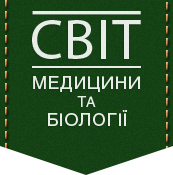| Список цитованої літератури |
- Archana M, Bastian Yogesh T L, Kumaraswamy K L. Various methods available for detection of apoptotic cells – a review. Indian Journal of Cancer. 2013; 50(3): 274-283.
- Auron M, & Raissouni N. Adrenal insufficiency. Pediatr Rev. 2015; 36(3): 92-102.
- Blaisdell L L, Chace R, Hallagan L D, Clark D E J. A half-century of burn epidemiology and burn care in a rural state. Burn Care Res. 2012; 33(3): 347-353.
- Bjornson Z B, Nolan G P, & Fantl W J. Single Cell Mass Cytometry for Analysis of Immune System Functional States. Current Opinion in Immunology. 2013; 25(4). http://doi.org/10.1016/j.coi.2013.07.004
- Dzevulskaya I V, Gunas I V, Cherkasov E V, Kovalchuk О І. Morfologicheskaya harakteristika gistogematicheskih barerov v organah neyroimmunoend okrinnoy sistemyi pri infuzionnoy terapii ozhogovoy bolezni ombinirovannyimi giperosmolyarnyimi rastvorami. Hirurgiya, Vostochnaya Evropa. 2014; 2(10): 113-124. (in Russian)
- Fuzaylov G, Murthy S, Dunaev A, Savchyn V, Knittel J, Zabolotina O, Driscoll D N. Improving burn care and preventing burns by establishing a burn database in Ukraine. Burns. 2014; 40(5): 1007-1012.
- Fuzaylov G, Anderson R, Knittel J, Driscoll D N. Global health: burn outreach program. J. Burn Care Res. 2015; 36(2): 306-309.
- Fan J, Wu J, Wu L D, Li G P, Xiong M, Chen X, Meng Q Y. Effect of parenteral glutamine supplementation combined with enteral nutrition on Hsp90 expression and lymphoid organ apoptosis in severely burned rats. Burns. 2016; 42(7): 1494-1506.
- Gunas I, Dovgan I, & Masur O. Method of thermal burn trauma correction by means of cryoinfluence. Verhandlungen der Anatomischen Gesellschaft, zusammen mit der Polish Anatomical Society with the participation of the Association des Anatomistes, Olsztyn. 1997: 24-27. Gustav Fischer Verlag.
- Graves K K, Faraklas I, & Cochran A. Identification of risk factors associated with critical illness related corticosteroid insufficiency in burn patients. J. Burn Care Res. 2012; 33(3): 330-335.
- Gunas I V, Makarova O I, Ocheretnyuk A O, Prokopenko S V. Changes in the relative volume of damaged lung areas in rats within a month after local hyperthermia of the skin and with correction by colloidal hyperosmolar solutions. Achievements of clinical and experimental medicine. 2014; 2(21): 54-58. (in Ukraine)
- Gamelli L, Mykychack I, Kushnir A, Driscoll D N, Fuzaylov G. Targeting burn prevention in Ukraine: evaluation of base knowledge in burn prevention and first aid treatment. J. Burn Care Res. 2015; 36(1): 225-231.
- Johnson B L, Rice T C, Xia B T, Boone K I, Green E A, Gulbins E, Caldwell C C. Amitriptyline usage exacerbates the immune suppression following burn injury. Shock (Augusta, Ga.). 2016; 46(5): 541–548.
- Kovalchuk О І, Dzevulskaya I V, Cherkasov E V, Gunas I V. Mechanisms of structural transformation of histohemic barriers of organs of the neuroimunuodocrine system under conditions of infusion therapy for burn disease. Clinical Anatomy and Operative Surgery. 2014; 13(2): 69-74. (in Ukraine)
- Kawase T, Hayama K, Tsuchimochi M, Nagata M, Okuda K, Yoshie H, Nakata K. Evaluating the safety of somatic periosteal cells by flow-cytometric analysis monitoring the history of DNA damage. Biopreserv Biobank. 2016; 14: 129-137.
- Lee M O. Determination of the surface area of the white rat with its application to the expression of metabolic results. Am. J. Physiol. 1989; 24: 1223.
- Lee K H, Lim D, Green T, Greenhalgh D, Cho K. Injury-elicited stressors alter endogenous retrovirus expression in lymphocytes depending on cell type and source lymphoid organ. BMC Immunology. 2013; 14: 2.
- Mosier M J, Lasinski A M, Gamelli R L. Suspected adrenal insufficiency in critically ill burned patients: etomidate-induced or critical illness-related corticosteroid insufficiency? – A review of the literature. J. Burn Care Res. 2015; 36(2): 272-278.
- Osterbur K, Mann F A, Kuroki K, DeClue A. Multiple Organ Dysfunction Syndrome in Humans and Animals. Journal of Veterinary Internal Medicine. 2014; 28(4): 1141-1151.
- Regas F C, & Ehrlich H P. Elucidating the vascular response to burns with a new rat model. J. Trauma. 1992; 32(5): 557-563.
- Rojas Y, Finnerty C C, Radhakrishnan R S, Herndon D N. Burns: an update on current pharmacotherapy. Expert Opinion on Pharmacotherapy. 2012; 13(17): 2485-2494.
- Rice T C, Armocida S M, Kuethe J W, Midura E F, Jain A, Hildeman D A, Caldwell C C. Burn injury influences the T cell homeostasis in a butyrate-acid sphingomyelinase dependent manner. Cell Immunol. 2017; 313: 25-31.
- Rani M, & Schwacha M G. The composition of T-cell subsets are altered in the burn wound early after injury. PLoS ONE. 2017; 12(6): http://doi.org/10.1371/journal.pone.0179015
- Stefanov O V. Doklinichni doslidzhennya likarsʹkykh zasobiv. Metodychni rekomendatsiyi [Preclinical studies of medicinal products. Guidelines]. Avicenna, Kiev. 2001. (in Ukrainian).
- Toussaint J, & Singer A J The evaluation and management of thermal injuries: 2014 update. Clinical and Experimental Emergency Medicine. 2014; 1(1): 8-18.
- Venet F, Plassais J, Textoris J, Cazalis M A, Pachot A, Bertin-Maghit M, Tissot S. Low-dose hydrocortisone reduces norepinephrine duration in severe burn patients: a randomized clinical trial. Critical Care. 2015; 19(1): 21.
- Vivó C, Galeiras R, del Caz, M D. Initial evaluation and management of the critical burn patient. Med. Intensiva. 2016; 40(1): 49-59.
- Zhu X M, Dong N, Wang Y B, Zhang Q H, Yu Y, Yao Y M, Liang H P. The involvement of endoplasmic reticulum stress response in immune dysfunction of dendritic cells after severe thermal injury in mice. Oncotarget. 2017; 8(6): 9035-9052.
|
